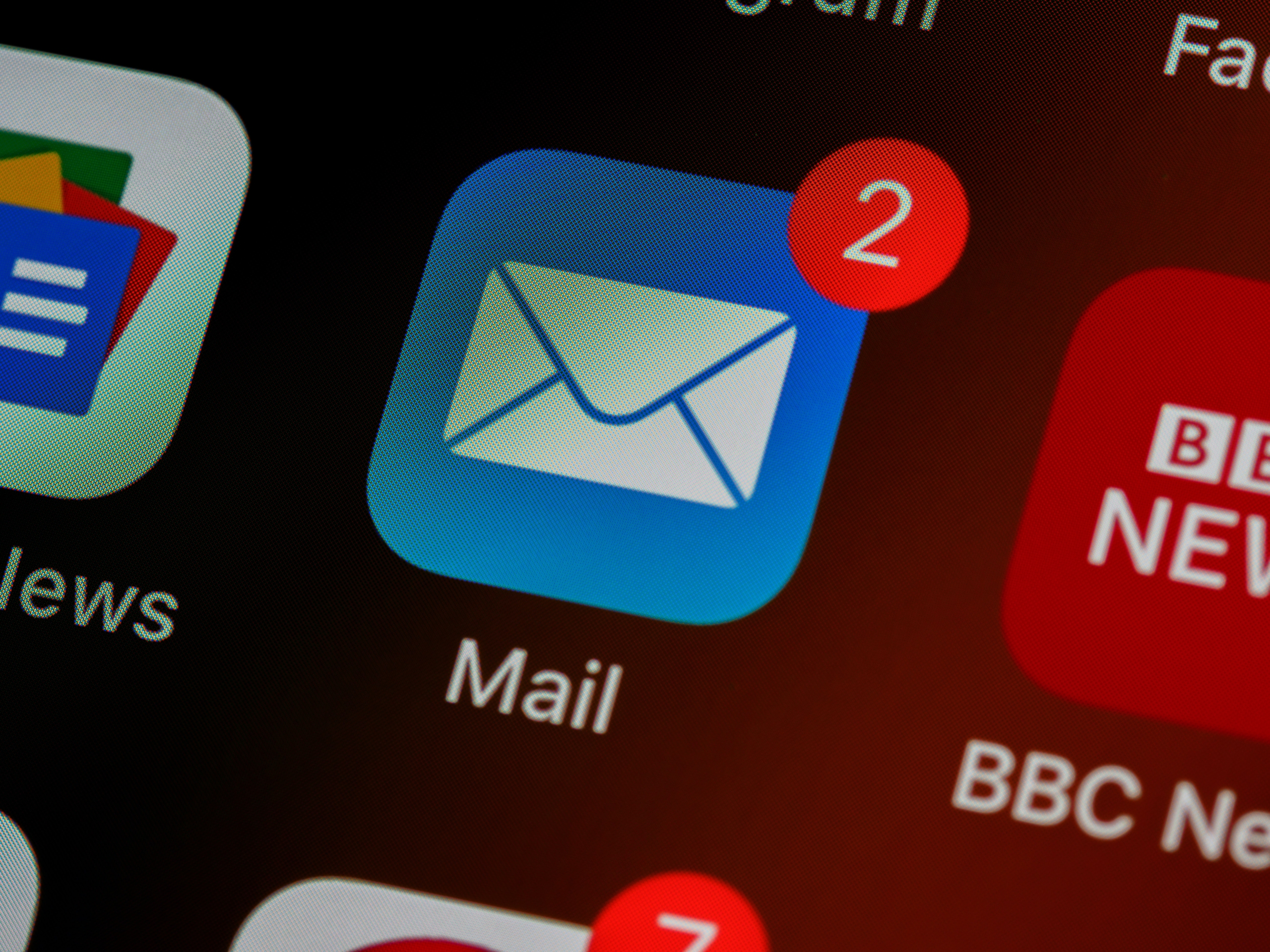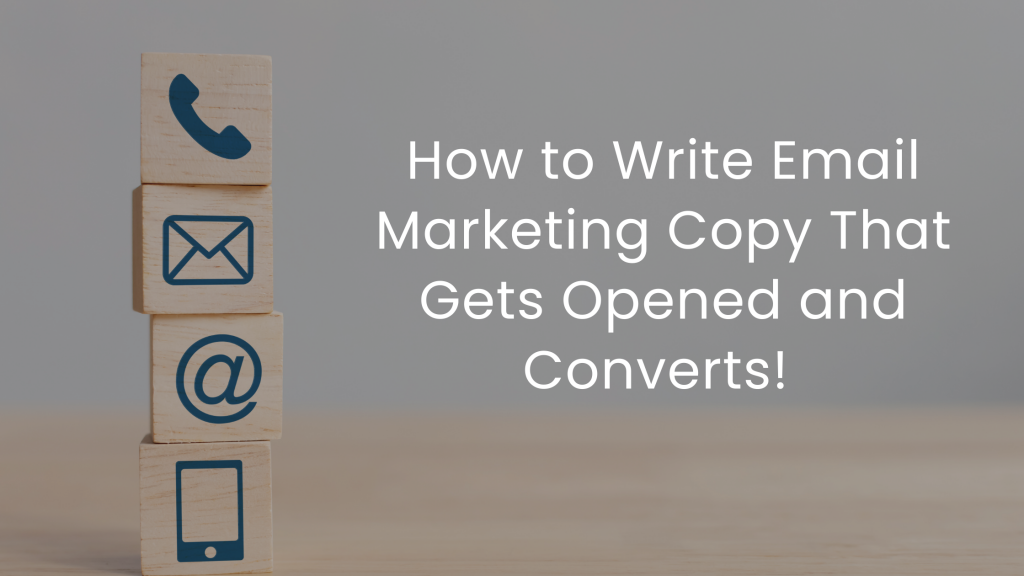

How many emails do you get from companies wanting to sell you things every day? Your current and potential customers would probably give a similar answer and that means your marketing emails are going into already overflowing inbox folders. Some of those email messages might even be from your competitors.
So what can you do to ensure subscribers open, read and act on your email? Follow these email marketing copy tips to start writing effective email copy that boosts clicks and conversion rates.
Create an email marketing campaign
Email marketing doesn't exist in a vacuum. It helps to further your overall marketing efforts. To make the most out of the time that you invest in writing email marketing copy, you need an effective email marketing strategy that outlines your goals. From there, you can create email marketing campaigns to help you achieve them.
A good example of how email campaigns work
Think of email marketing as a relay race. The finish line of the race is your overall goal for email marketing, such as increasing traffic to a specific landing page.
Each leg of the race is one of your email campaigns. It has a specific goal to achieve. For example, the goal of your first email campaign may be to get 1,000 new visitors to your landing page during the first quarter. The goal for the next email campaign is to get 2,000 new people to visit that page in the second quarter. By successfully running each leg of the race, you get to the finish line.
Every email that you send is like taking one step during the race. Its purpose is to move you forward just a small amount so that you're closer to achieving your goal. In this example, the email marketing copy that you write would seek to get more visitors to that landing page, but the copy would do so in different ways to keep your email copy fresh and engaging.
Tips for email marketing campaigns
When creating campaigns, follow these tips with your email marketing copy:
- Know your target market and tailor word choice and messaging to their interests, preferences and needs. Conduct market research to ensure you have a clear picture of your
- Create actionable goals with measurable email performance outcomes, such as click throughs, open rates or sales conversion rates.
- Segment your mailing list into groups based on criteria, such as what they've purchased from you or how many times they've bought. Instead of sending every email to your entire list, create campaigns that communicate directly to the audience. After all, you may wish to talk to a new subscriber than one of your brand's most loyal customers.
An engaging subject line
To achieve email marketing success, the recipients of your messages actually have to read them, and subject lines go a long way toward determining whether they will. To write great subject line copy:
- Write it first. This may seem like a silly tip, but be honest--how many times have you accidentally skipped over the subject line, wrote out a message and just immediately hit send? Because you can't afford to send out a blank subject line, get it in place before you do anything else.
- Shorter is better. On a desktop, an email subject line can be around 60 words but many people won't be using their computers to read your emails. In America, 85% of people now own smartphones, and many people use them to check email on the go. On mobile devices, your email subject line may be as short as 25 characters, so try to write compelling copy that is 8 words or less.
- Be intriguing but specific. Your subject line should make the recipient want to click, but avoid the temptation to be too mysterious. People are far more likely to click a subject line that says "Want to Save 20%?" than "We Have Big News."
- Keep it simple. A great marketing email has one specific purpose, and the subject line should clearly reflect what it is.
- Add some keywords. Many people set up filters to manage their in-boxes. Using keywords in the subject line can help ensure your message lands in a to-be-ready folder rather than the spam.
- Don't scream at your readers. In netspeak, capital letters mean a raised voice. Avoid writing your subject line all in caps, so it doesn't seem like you're shouting at your potential customers.
- Proofread here, too. Copy-paste errors and misspellings will reflect poorly on your company, so reread that subject line before you hit send.
- Do some test runs. What type of subject lines work best for your company depends a lot upon your target audience, and you may need to experiment to get the recipe for your own effective secret sauce. Try A/B testing by sending the same email message out with two different subject lines. Compare conversion rates and use the data to inform the copy the next time you write a subject line.
Useful preview text
Preview text is the excerpt that displays under or next to your subject in a marketing email. Both the subject line and preview text determine whether your email recipients will read your message. Generally, the same rules for writing subject lines apply when writing preview text for email marketing. Follow these email tips for best results:
- Keep the length short. Aim for 35 to 90 characters.
- Catch the reader's attention with an interesting, engaging message.
- Write text that builds off of your subject lines, giving recipients an idea of what the message contains.
- Avoid being gimmicky. Like the subject line copy, the preview text should accurately reflect exactly what your message is about.
- Proofreading is important to ensure the preview text makes sense and is free of errors.
Email marketing copy for readers
The body copy for your email messages is where you communicate your message. Email marketing copy should include:
Greeting
Personalize your messages to your email subscribers using software that adds their names. Although no one will think they're the only ones to receive your email in their inbox, messages should speak directly to the person rather than a blanket email that begins with "dear customer."
Your salutation should suit your target audience. Think about how you'd address them in person and write the greeting accordingly.
Primary email messaging
When you write email marketing copy, you have a particular goal in mind. The purpose of the body copy is to build desire in the reader or spark interest, so that the person who receives your email in their inbox will take the action you desire, such as entering your sales funnel by browsing a sale or visiting one of your landing pages. Some things that you can include in the body content are:
- Findings of original research or a new third-party study that may be of interest to your customers
- A summary of your latest blog post on a topic
- A story of a customer's journey that may inspire readers and act as social proof of the value of your product or service for your email subscribers
- Helpful content like tips and tricks
- Announcements about special events or sales that can benefit your subscribers
- Information about new products that your customers may want to buy
- Thank you messages that show your gratitude when customers complete a purchase or send a referral
- Good news about your company or something else of interest to your customers
Call to action
If you're following all the tips I've outlined, you should have a goal for every email. The call to action is where you ask the reader to do something that will help you accomplish that goal. Often, the call will be to click a link that leads to the homepage specific page on your site. You may also want to create landing pages for various purposes, such as completing a customer survey or advertising an exclusive sale. For copy that converts, call to actions should be brief, simple to understand and include an action verb, such as:
- Shop now to...
- Visit our site to...
- Take advantage of...
- Get in on this...
- Check out our...
- Learn how...
Top tips for writing email marketing copy
- Keep your email marketing campaign in mind. Know why you're writing email copy. Use the goal to guide your email copywriting.
- Stay on message. Make every sentence in your email copy count. You can't stray from the main message if you want copy that converts. If you find your email content veering in another direction, save the message and use it to write email marketing copy for a future message in your campaign.
- Tailor the message to the target audience. Remember, you don't have to send the same email to everyone on your list. You may want to use other words when talking to one segment of your mailing list.
- Make it easy to read. People on mobile devices are unlikely to sit and read a big wall of text. Break the email copy down into sections with subheadings and use bulleted lists to make your content easier to read—or as we like to say at Stretch, snackable!
- Offer value to your customers. Even if your content is well written, customers won't want to heed your call to action if you haven't built desire. Put yourself in your customers' shoes. Think about what it would take for you to do whatever your email marketing copy will recommend at the end. Approach content as a customer rather than an email copywriter as you craft every word to write copy that converts.
Email marketing copy FAQs
How do you write an email copy?
To write great email copy that a customer will be excited to find in their inbox, set a goal and gear your content toward accomplishing it. The email copywriting tips above will walk you through the process step by step.
How do I write email marketing copy?
Email marketing copy can include articles, product descriptions, social media posts, sales copy, public relations copy, and email writing. No matter what type of marketing copy you're writing, follow these tips.
-Set a goal for your copy
-Clearly define your audience
-Select and maintain the right tone for your marketing copy
-Start with a strong opening
-Build desire with content that speaks to your audience's desires and needs
-Finish with a strong closing that invites the reader to take the next step